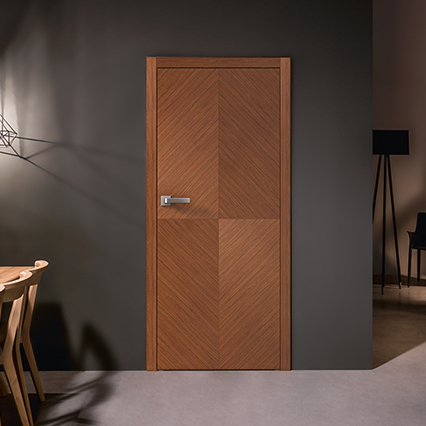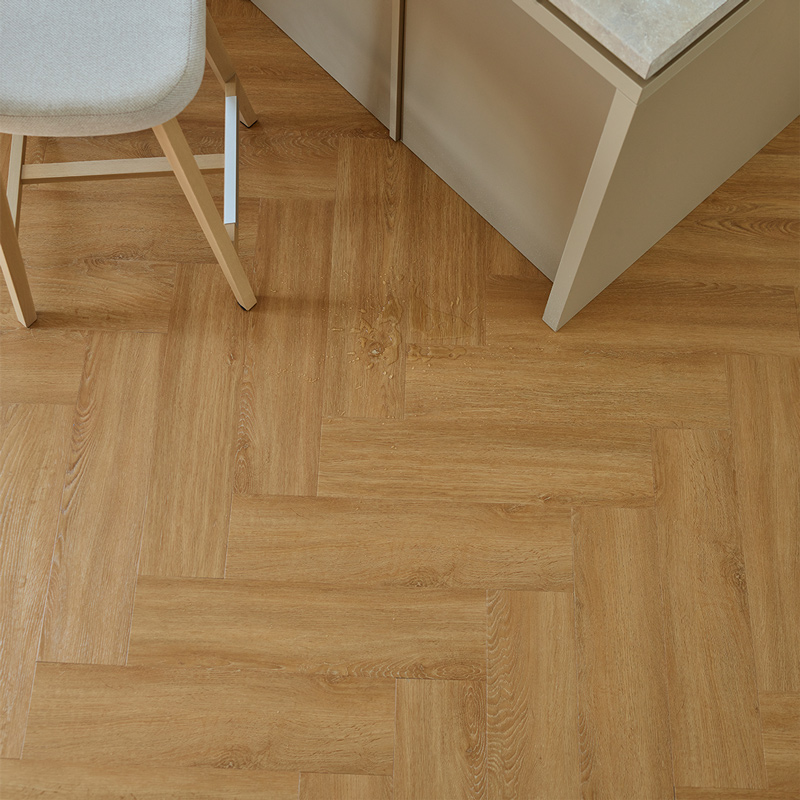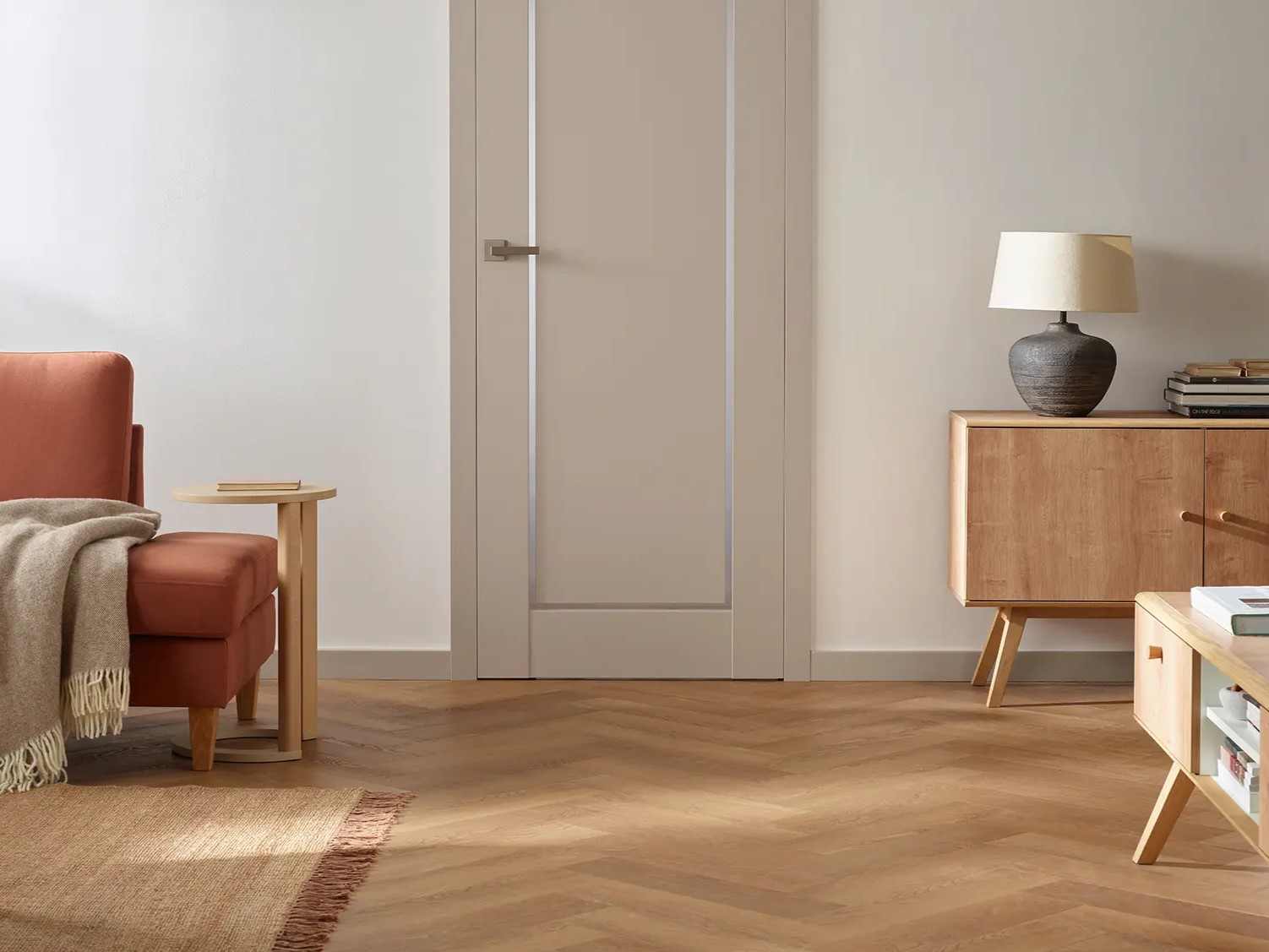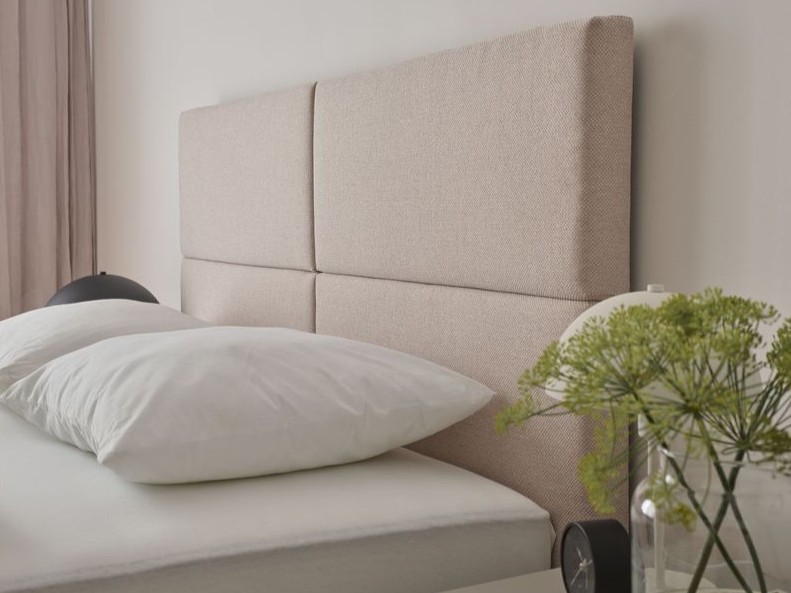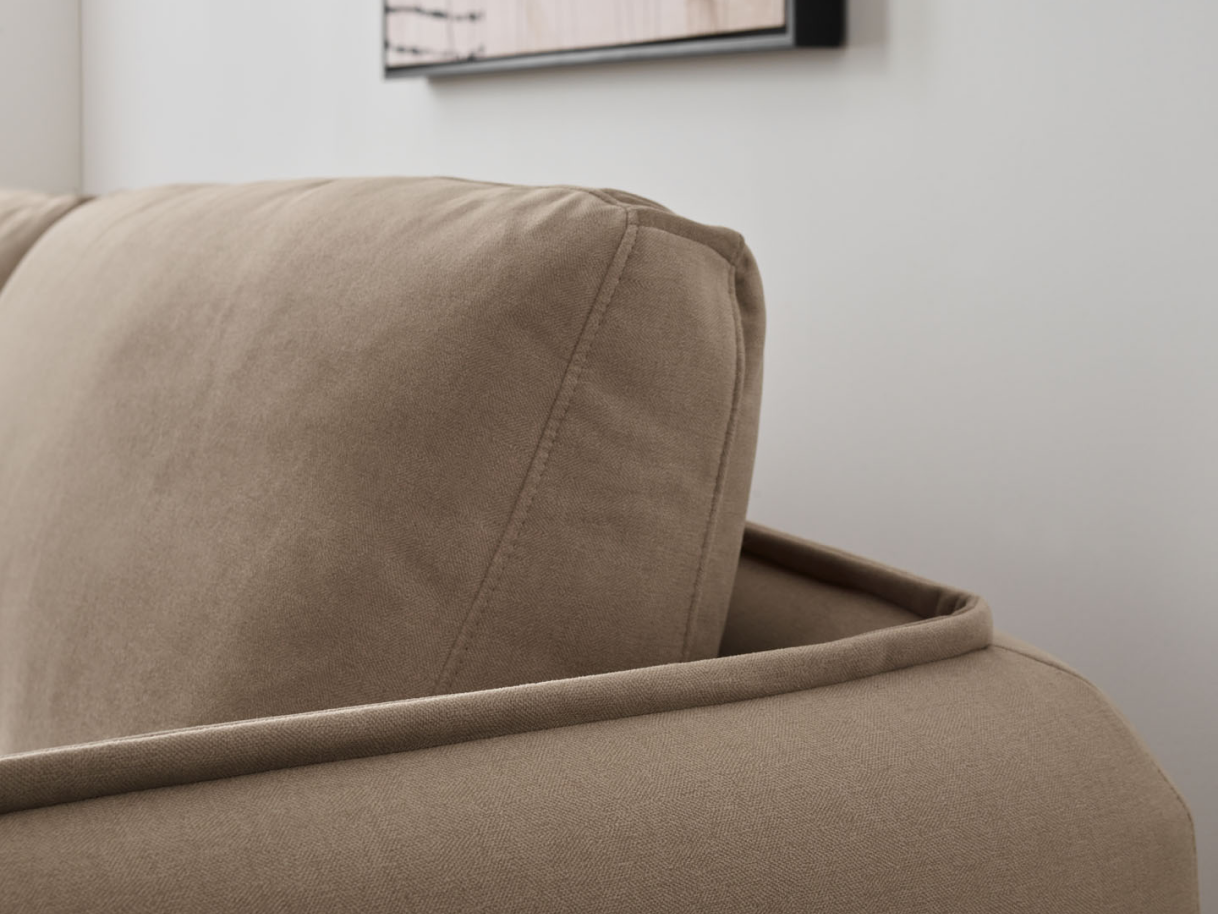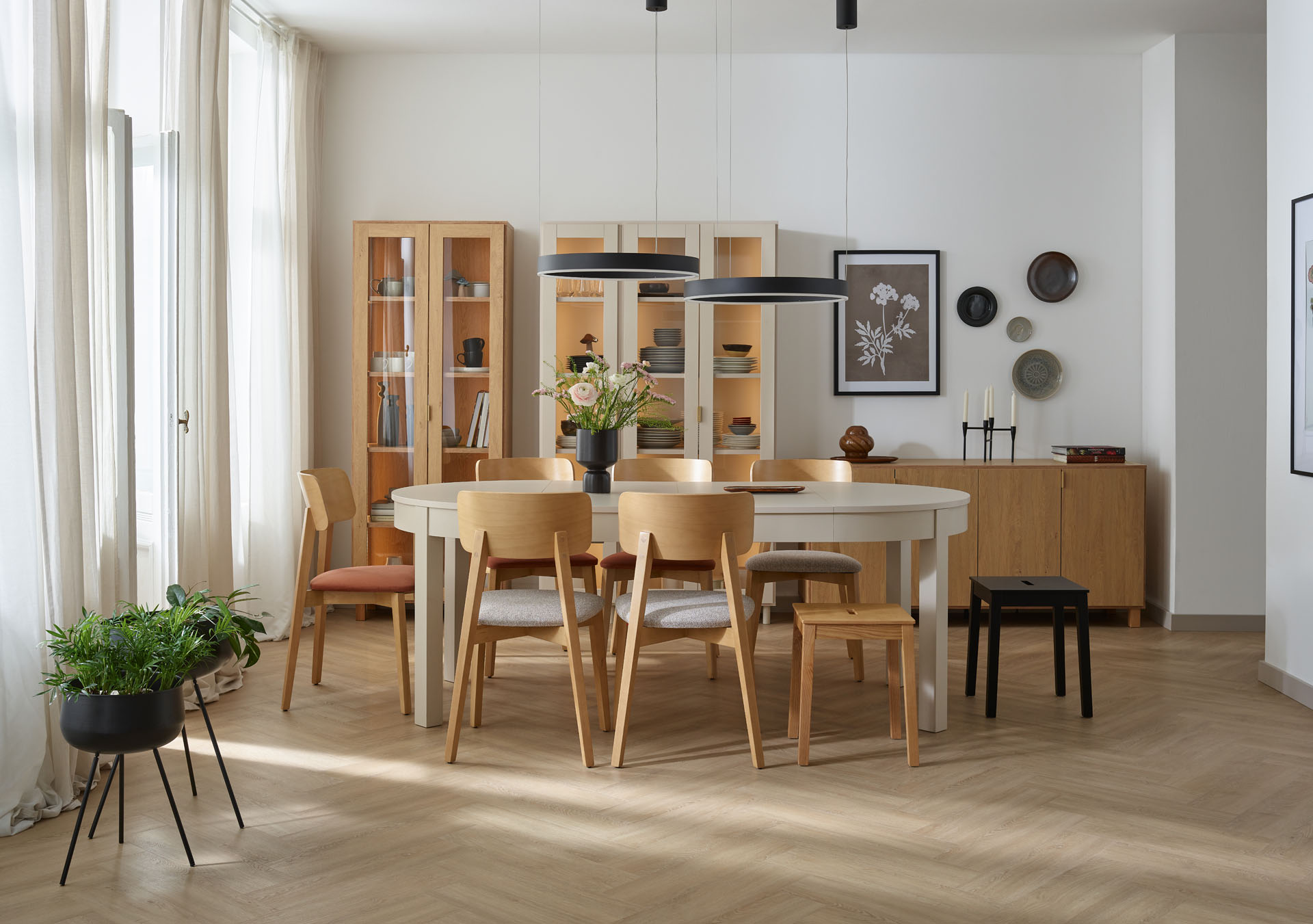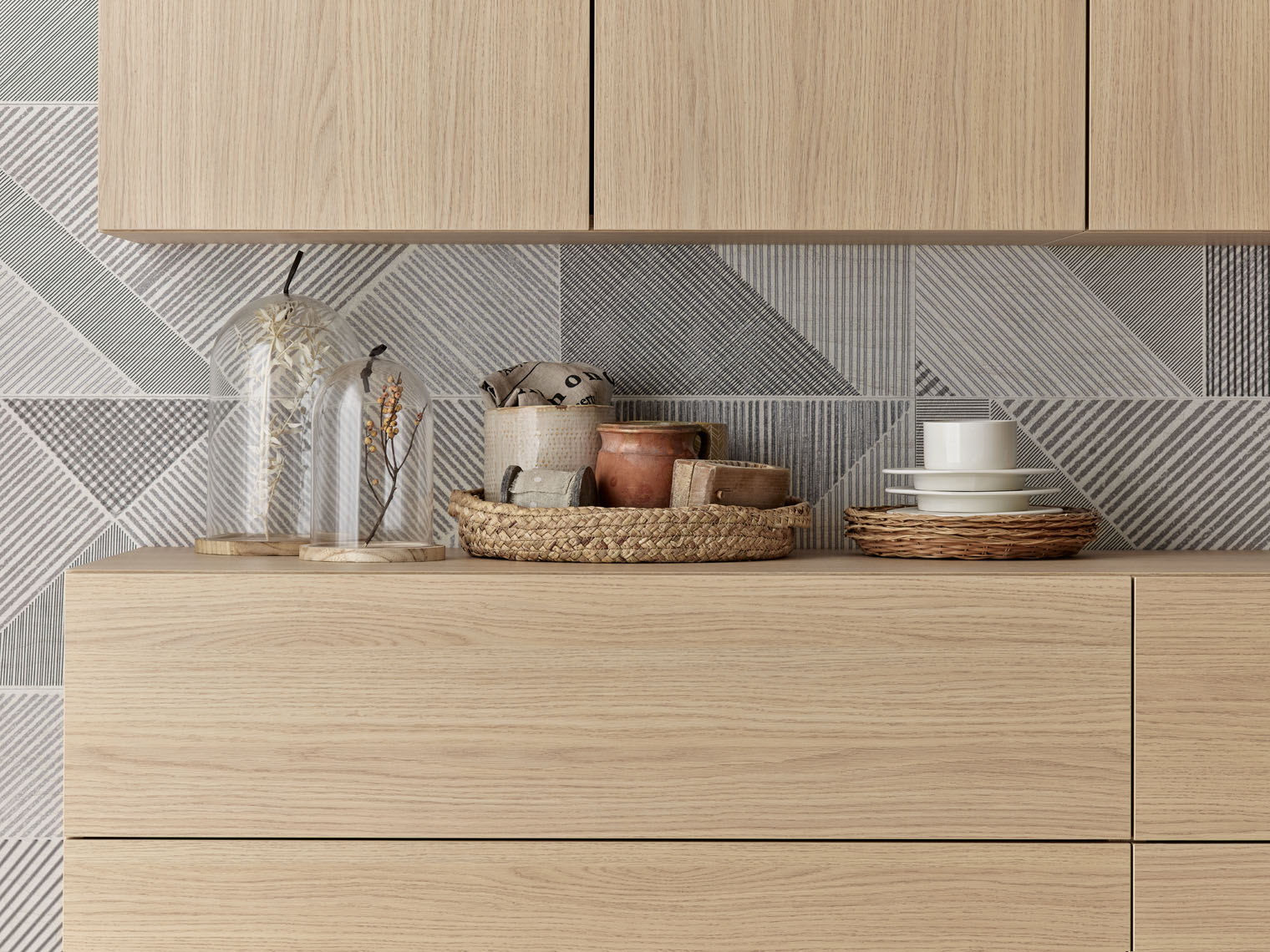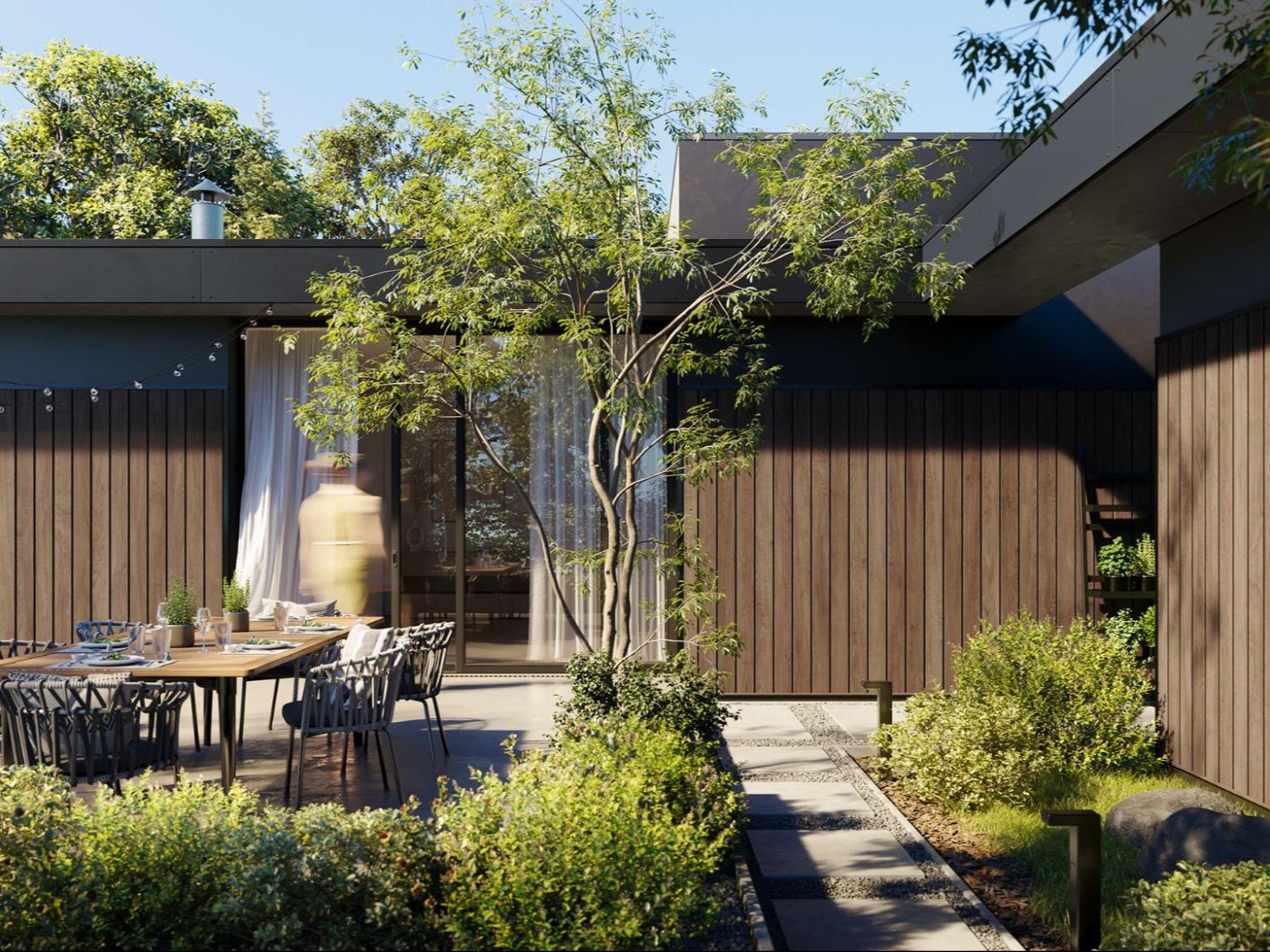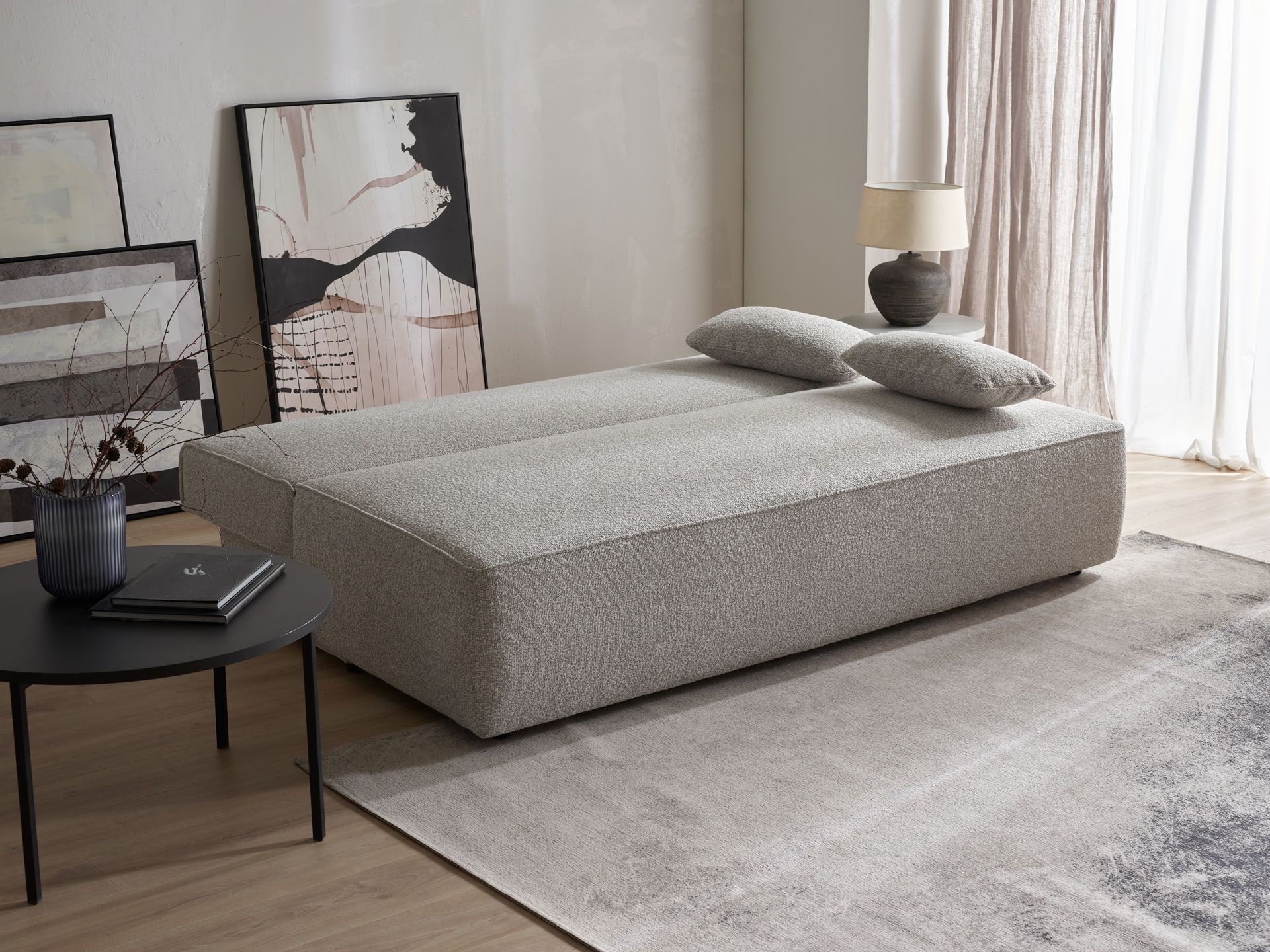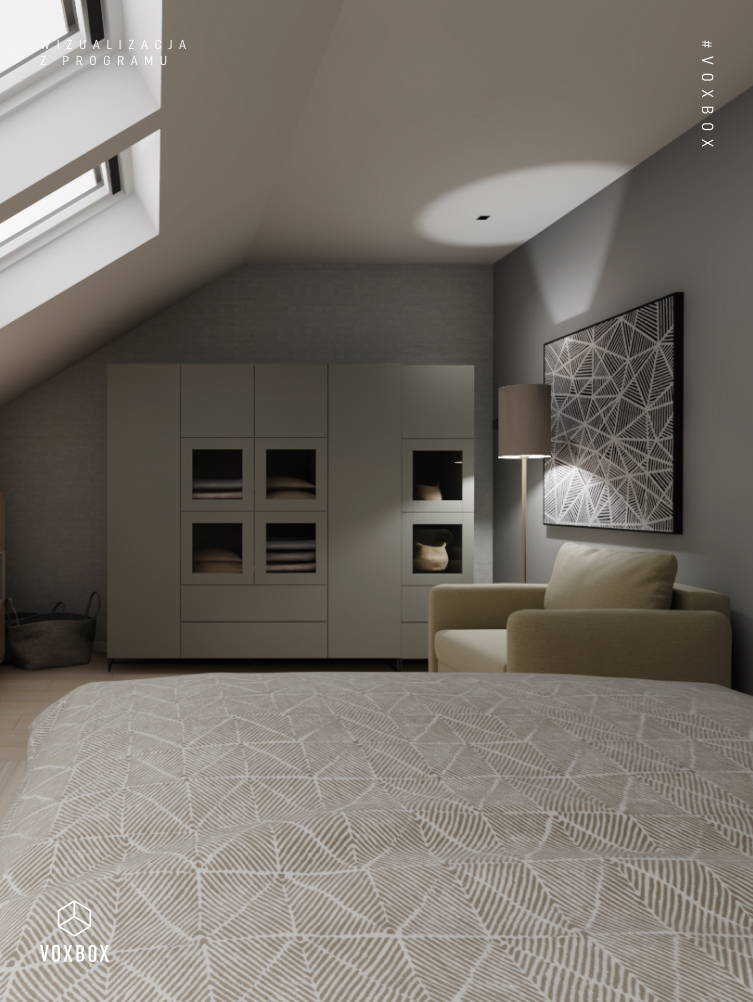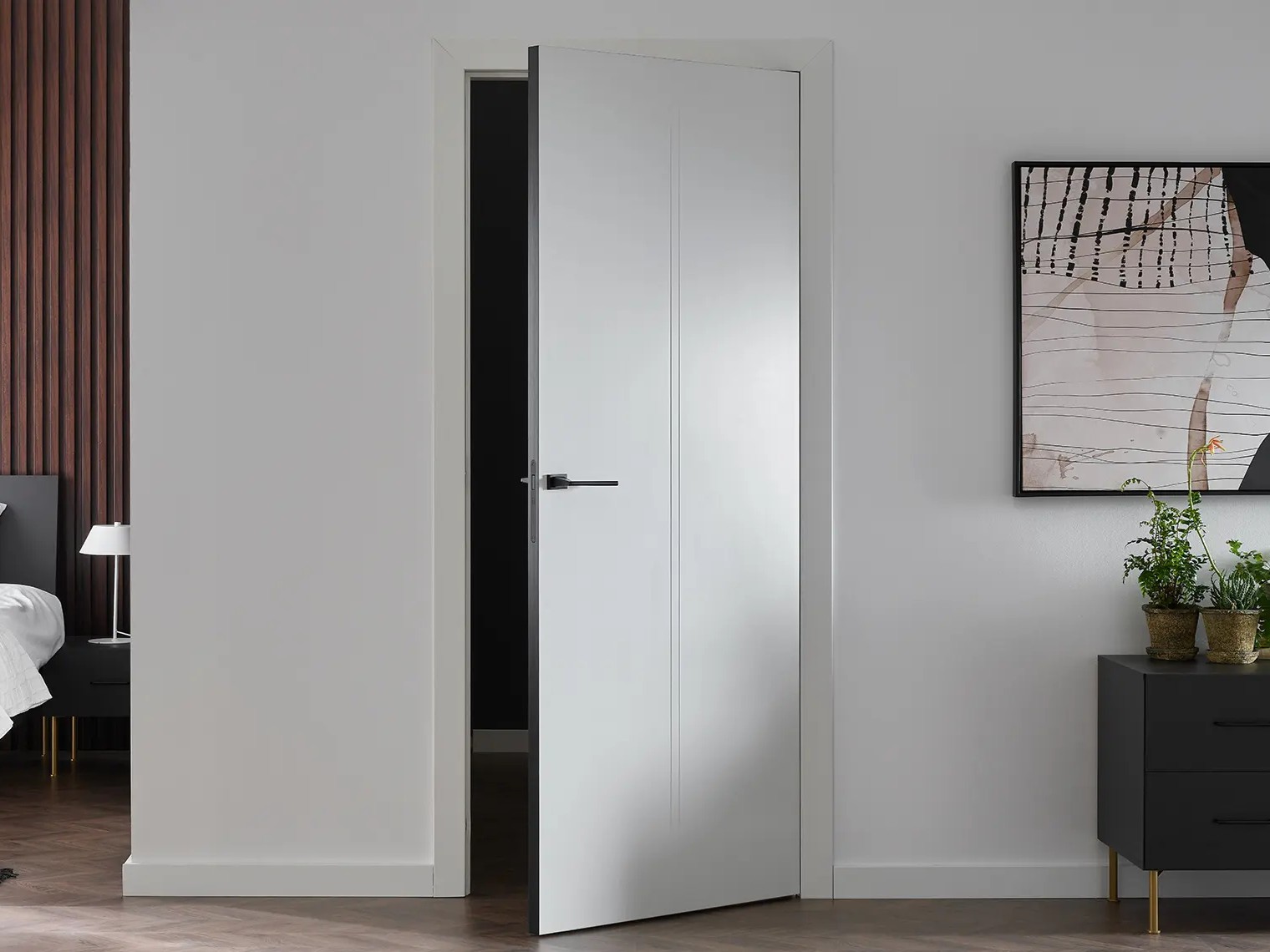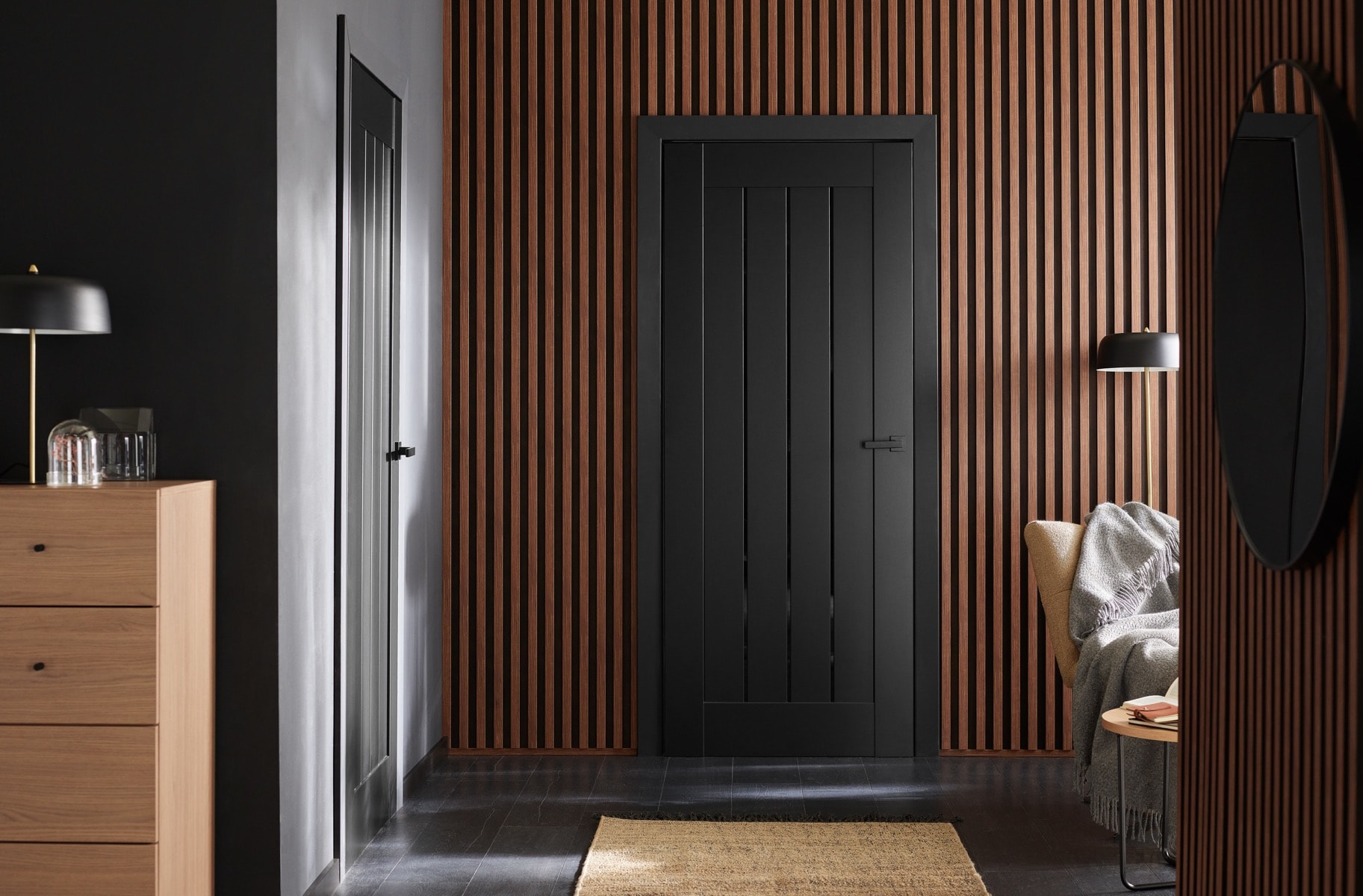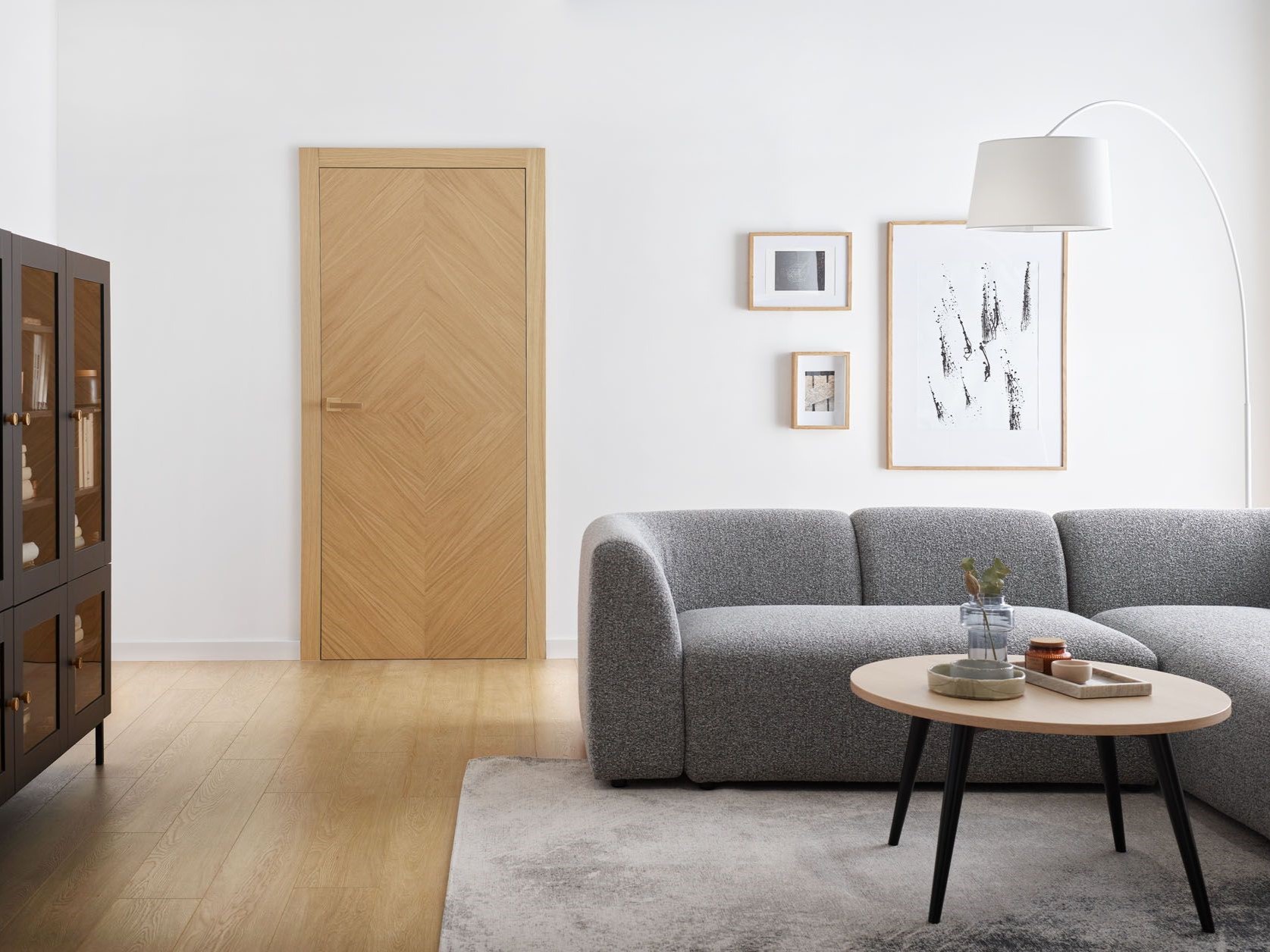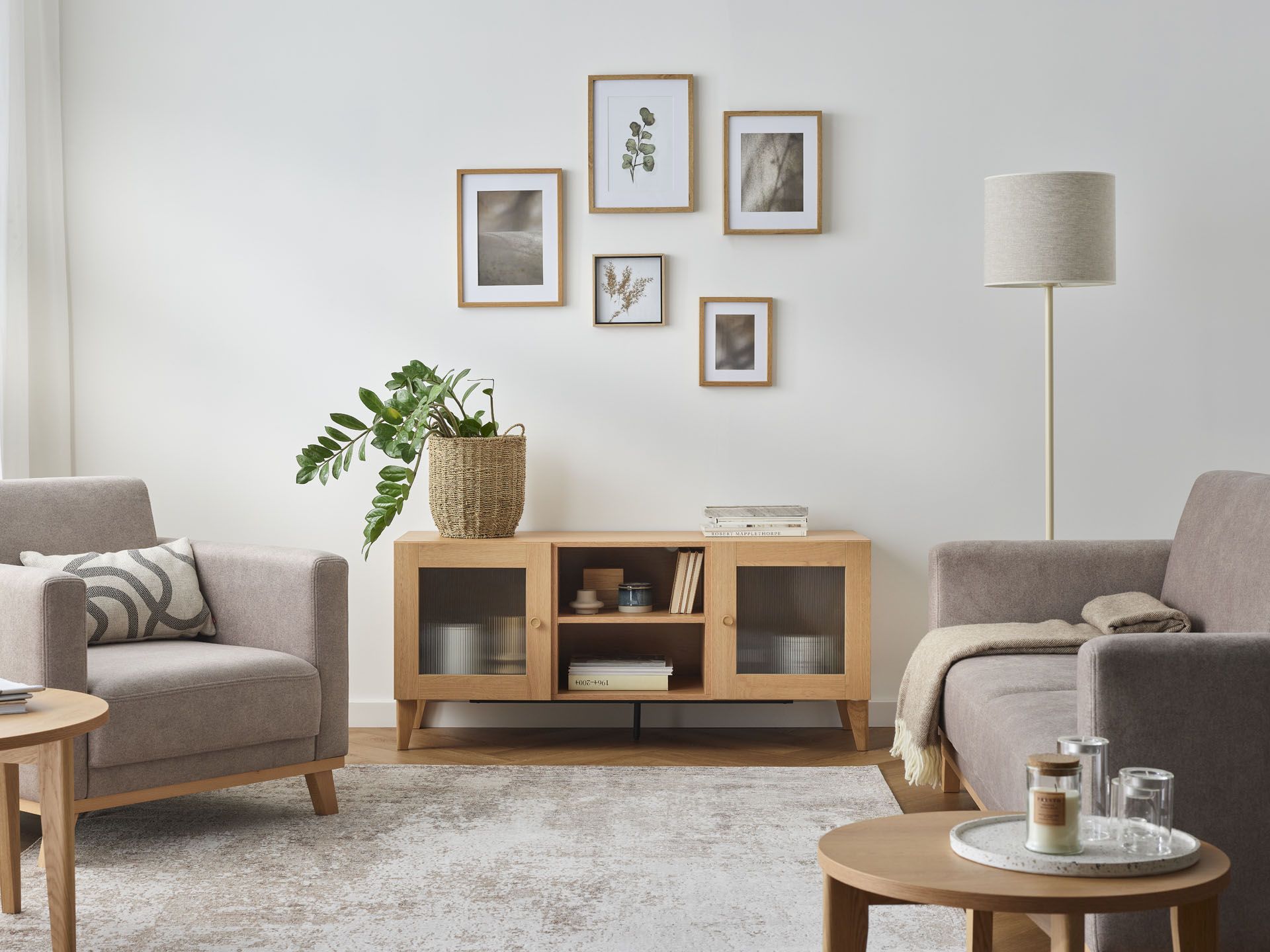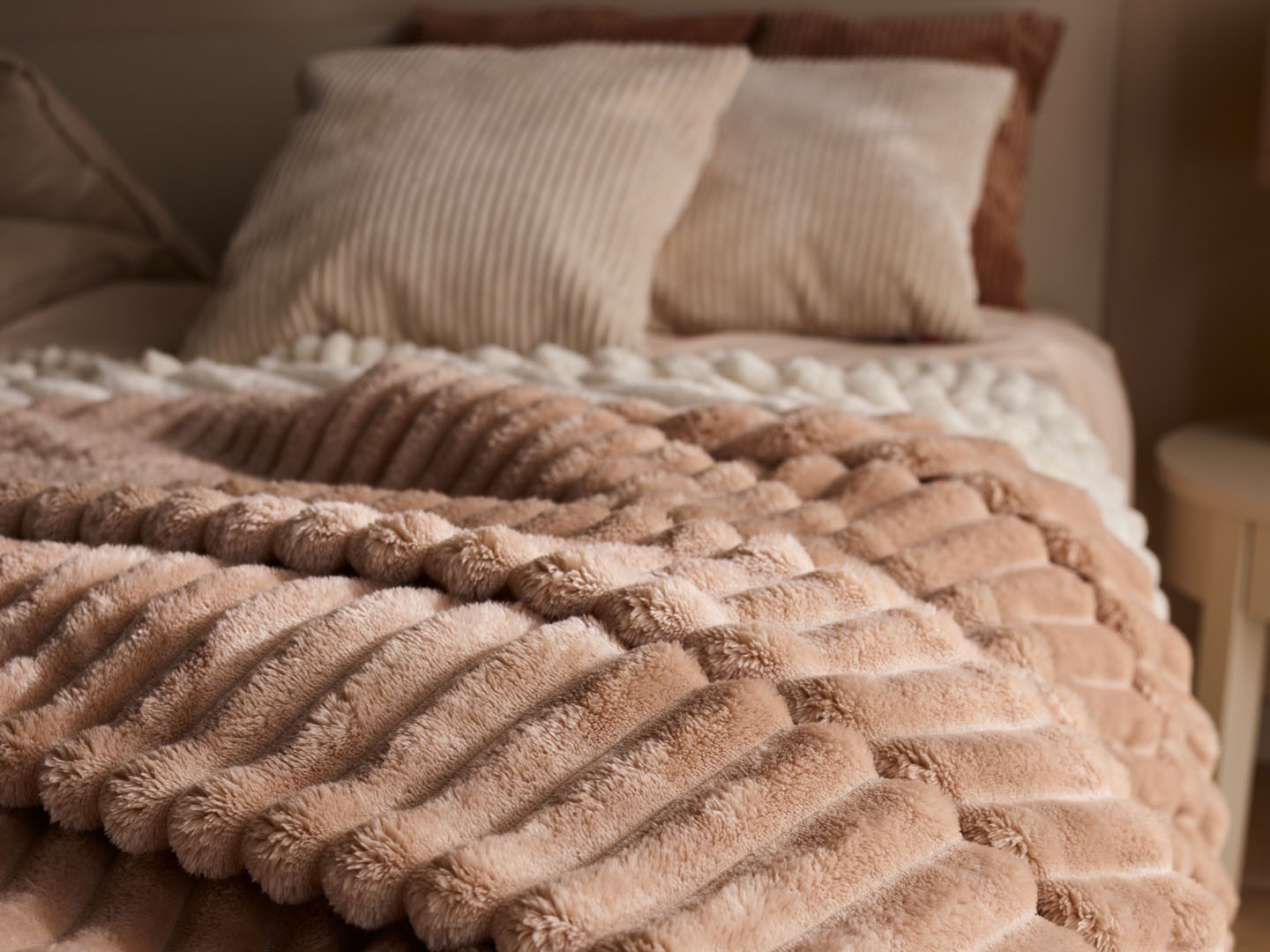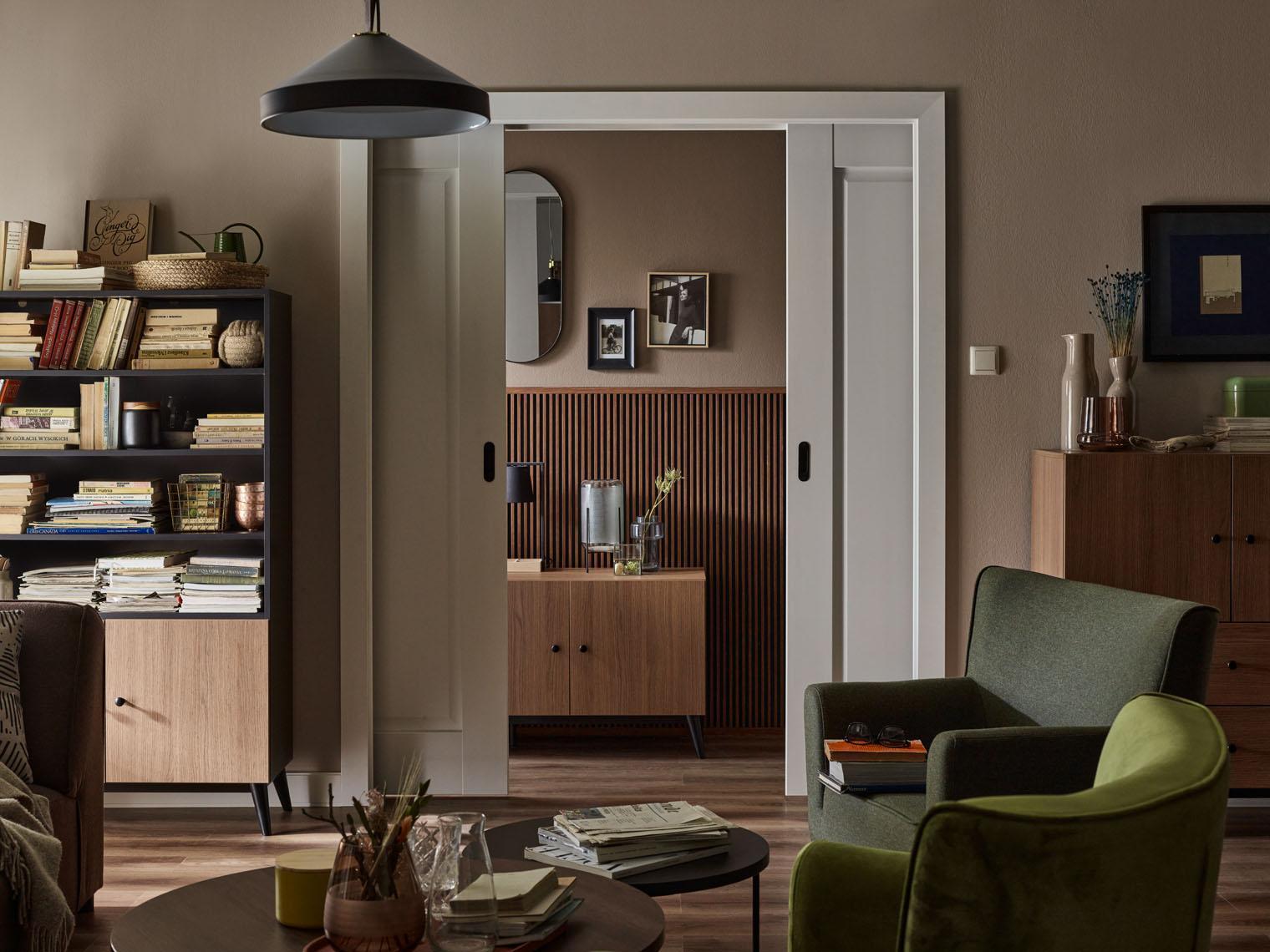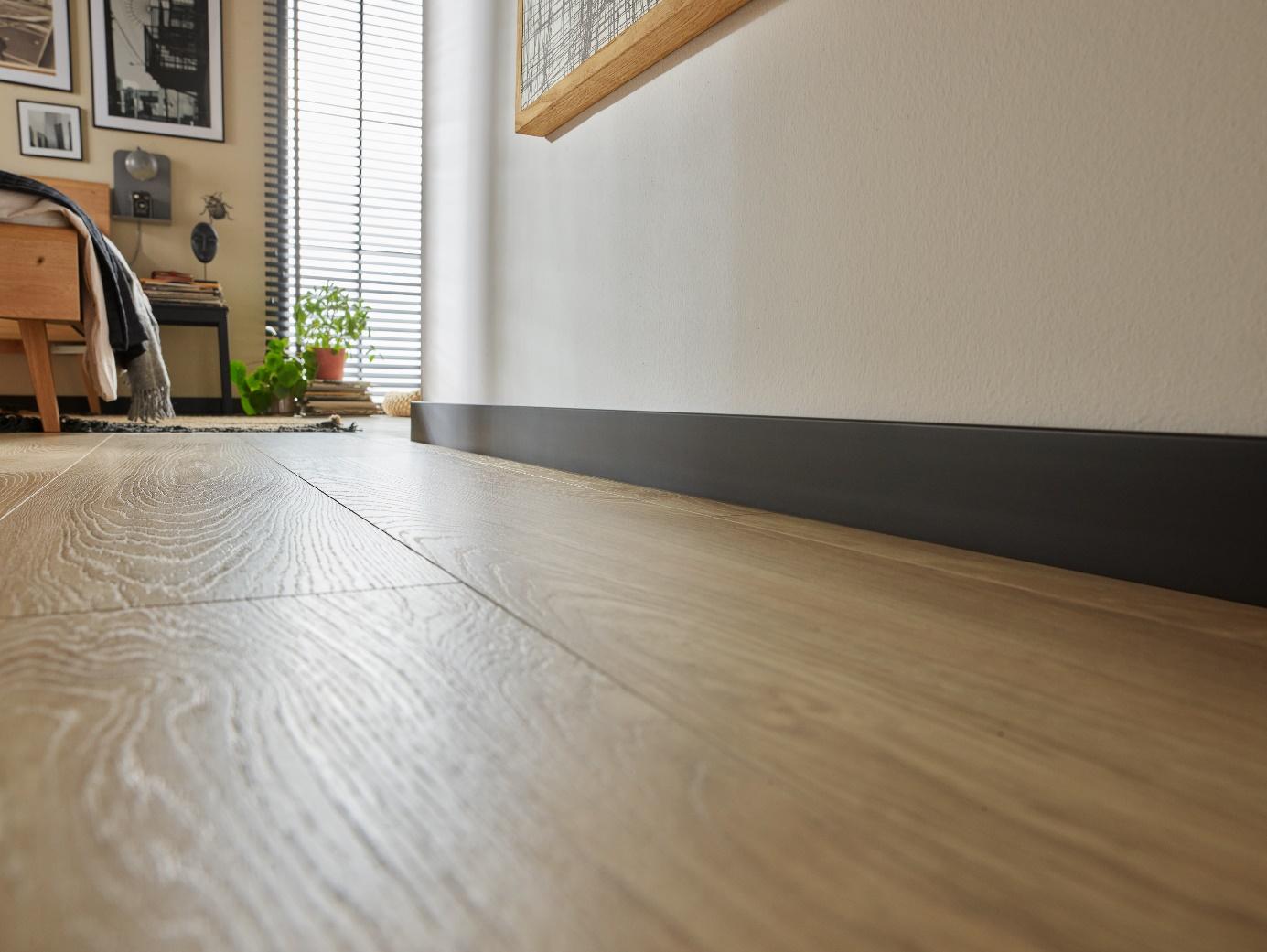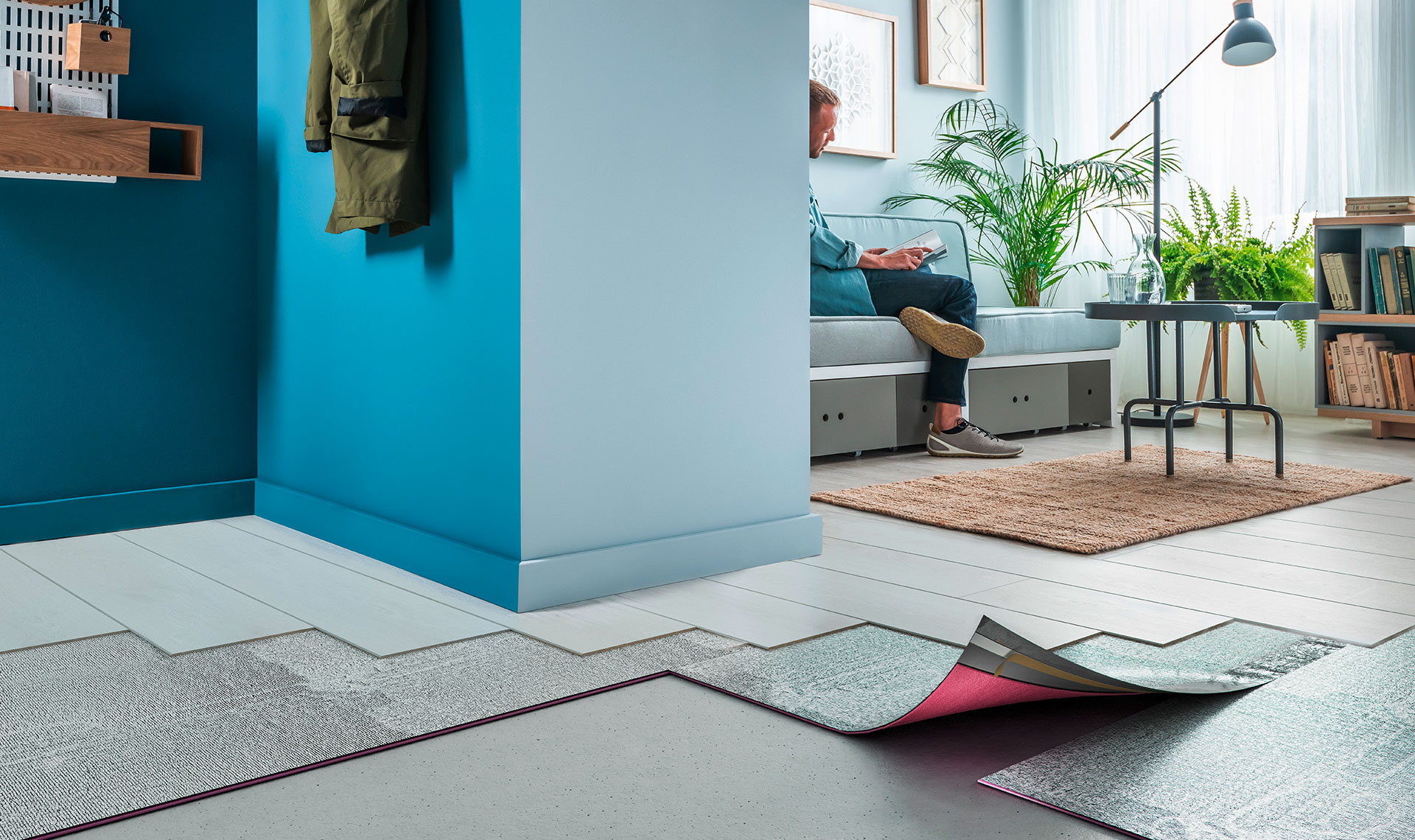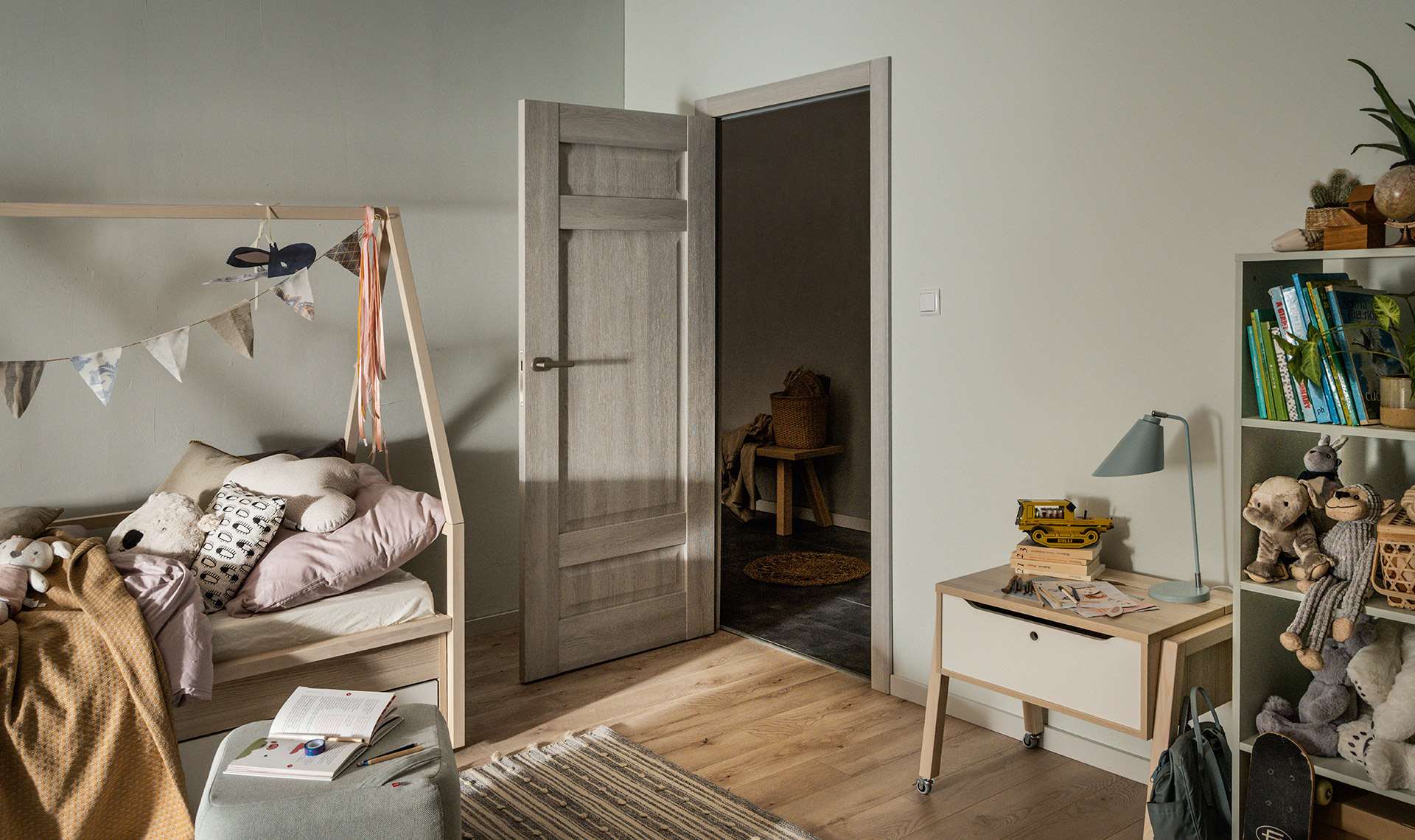Which door finish to choose? veneer or laminate
The appearance and construction of doors is of great importance for the interior design - if properly chosen, they can emphasise its individual character and create a space in which we feel at ease. When choosing interior doors for your home, it's worth considering what technique they are finished in. Veneered or laminated - what is the difference between these two types of doors and which is the better choice?
Doors made of solid wood have triumphed in our homes for many years. Nowadays, their place is increasingly taken by models covered with veneer - natural or synthetic. Doors made using these techniques are long-lasting and aesthetically pleasing, and the variety of designs and colours available allows us to choose a finish that will provide a well-matched backdrop or a striking highlight.
What is the difference between veneered and laminated doors and which is the better choice?
WHAT IS VENEER AND VENEERED DOORS?
Veneer is paper-thin sheets of natural wood, which are obtained by sawing off the outer layer of a log (known as machining). The narrow pieces are joined together in the order in which they were cut from the tree trunk. This makes it possible to perfectly reproduce the structure of the wood and its grain and to achieve a unique effect.
Due to its subsequent use, veneer is divided into veneer and facing. The former type is used precisely as a natural form of door finish. The thickness of its sheets varies from 0.1 to 1 mm - however, it is usually no more than 0.5 mm. Veneers are made from large-diameter round wood from a previously quality-selected tree. As a result, they have significantly fewer defects than solid wood. Veneered doors are also cheaper to produce than all-wood doors, but their appearance is very similar to them.
The most common wood species used for veneered doors are oak, beech, walnut, ash or mahogany. However, in addition to natural veneer, modified veneer is also available on the market. It is obtained from exotic, fast-growing trees grown on African plantations. How is it made? The sliced wood is first stripped of all imperfections (such as holes and discolouration). It is then dyed and arranged in special blocks, given a suitable pattern by gluing and pressing. The resulting blocks are positioned in a suitable manner and re-sawn into individual sheets. The modified veneer created in this way has the advantage over natural veneer that it guarantees a perfectly consistent shade and also the repeatability of the grain.
WHERE WILL VENEERED DOORS BE SUITABLE?
Doors finished with veneer will look just like traditional solid wood doors. Therefore, if our home furnishing budget does not provide for the purchase of more expensive wooden doors, we can confidently reach for this type of natural veneer. We can use it wherever we want to expose the natural structure of wood and its characteristic features in the form of grains.
Veneered doors work particularly well in classic arrangements. Subdued shades of beige, white and brown can be found, for example, in the elegant Formo door. Covered with natural oak veneer, they emphasise the cosy and modern character of the interior with their subtle lines and perceptible wood structure. But that is not their only advantage. Veneered doors are made of environmentally friendly materials, so you can opt for them not only in the bedroom, but also in the children's rooms without fear. In addition, doors made of natural veneer allow air to pass through micropores and create a favourable microclimate in our four corners.
If you decide to invest in veneered doors, remember that they are highly sensitive to certain chemicals and detergents. Therefore, do not use cleaning agents designed for wood or laminated furniture or those based on alcohol - they may cause the surface of the veneered door to become dull and lose its charm. A slightly damp cloth is best for cleaning.
LAMINATED DOORS, A PRACTICAL AND SYNTHETIC VENEER
Synthetic, however, does not necessarily mean inferior. Today's door veneers impress with a wealth of colours and patterns, so we can easily adapt them to the look of our interiors. Another great advantage of modern veneers is the fact that they reproduce the structure and colour of wood very well. As a result, we can enjoy a door with a natural look without having to buy a wooden door.
Door veneer is nothing more than a layer of cellulose fibres bonded with resin. The material is placed on the door leaf - it can also be enhanced with additional protective layers. Among the synthetic veneers used on interior doors, there are two basic types: CPL and HPL.
-
CPL laminate is a thin layer, consisting of several layers of hot-pressed paper soaked in special adhesives and covered with a layer of abrasion-resistant melamine resin varnish. It is characterised by extreme resistance to mechanical damage and ultraviolet radiation. For this reason, the veneer can be successfully used as a finish for internal doors in rooms with high exposure to the sun.
-
HPL (High Pressure Laminates), on the other hand, is one of the most resistant materials to mechanical damage. It is created by pressing several or more layers of impregnated paper, carried out under high pressure and at very high temperatures. Resistant to abrasion and heavy use, HPL laminate is best suited as a door cladding in public areas - such as hotels, schools and offices.
WHEN TO OPT FOR LAMINATE DOORS?
Laminated doors can be successfully used in dwellings with young children. They are relatively light and very resistant to mechanical damage. It is definitely more difficult for our children to scratch them. However, if this does happen, it is easy to remove the damage - it is enough to obtain special waxes and crayons with which we can cover up the blemish.
For example, the Modus door with the DRE-CELL foil finish will work well in a child's bedroom. This ecological and wood-like product, made of natural raw materials, will successfully maintain its impeccable appearance for many years. Its exceptional elasticity makes it difficult for cracks and scratches to appear even when hit by a heavy object.
The surface of laminated doors is also highly resistant to moisture. For this reason, we can confidently use them in rooms that are exposed to water, such as kitchens and bathrooms. They are also a good choice for people who share their home with a pet dog or cat.
Synthetic veneer is also an alternative to more expensive wooden doors. There is a truly enormous range of colours to choose from, which perfectly imitates this natural material. If you opt for a Nordia door, you can choose between veneer with a maple, walnut, oak or pine décor.
VENEER OR LAMINATE - WHICH IS BETTER?
Wood is one of the most versatile materials used in architecture and interior design. It is not only functional, but also brings a unique atmosphere and warmth to a room. Therefore, if we appreciate its timelessness and innate elegance, veneered doors will be perfect for our interiors. They will blend in perfectly with other natural elements such as wooden flooring or furniture. A wide range of different stains will allow us to choose the right pattern and colour to match the style of the rest of the house.
A simpler to maintain and slightly more economical option is a door finished with synthetic laminate. However, just because their price is lower does not mean they are any less functional or durable. It's a good choice, especially if you want an unusual door colour. The palette of colour options for laminates is almost endless - grey, black, white, matt or gloss? These are just a few of the possibilities offered by laminate doors. We can easily adapt their colour and form to our own needs and taste.





















